Battle of the Behemoths – Let the War Rage On! – iOS 8 v/s Android L
In the midst of these treacherous times, the world seems to be engulfed by wars raging on all fronts – whether it be of the economic form, where we seem to have barely slipped away from the ominously looming Double Dip Recession; to the political form, which seems to have a firm grasp on us currently (Ukraine and Afghanistan being the recently prominent countries to be plagued by civil unrest and internal turmoil), or the age-old ideological one, with groups like Boko Haram and the ISIS taking center-stage in the past few months.
However, unbeknownst to many wise and experienced Generals or political observers on rages another war – of another form, format and with almost as far-reaching consequences. This is one war which was inadvertently started, way back in 2007 and takes place between two of the biggest and probably most powerful behemoths of the 21st Century – Google and Apple. These software companies have engaged in a mobile platform war.
These two mobile Operating System shook up the cellular phone in a completely unanticipated way – one which even resulted in the upheaval and casting aside of giants like Nokia OYJ and RIM / Blackberry. In fact, these companies, which were once the Yin to the other’s Yang, turned from friends to foes over this very thorny issue – the Operating System.
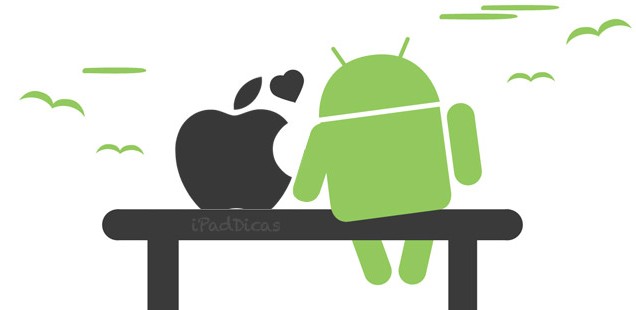
Their respective platforms – Android OS and iOS – have enabled the companies to reach evaluations far from even their founders’ wildest fantasies! Today, each has a valuation running into hundreds of Billions of dollars, if not Trillions of dollars! Apple’s Enterprise Value is today more than the GDP of certain countries like Singapore or even the largest stockpile of gold bullion in the US while Google was recently said to have toppled even Apple from its perch!
So, how exactly did these relatively new companies (Google is still a teenager!), reach such impressive heights?! The answer lies, primarily in the advent of their individual mobile OS. Their OS powers a large range of phones, tablets, wearable devices and even automobiles now. While iOS is a proprietary OS which is available only on the iPhone, iPad and iPod Touch devices. Android is an Open Source OS which Google provides free-of-charge to all OEMs (Original Equipment Manufacturers). While the vast majority will only view them as a smartphone or an item to flaunt, the past 5 years have shown that this winner-takes-all war has the potential to catapult the resulting leader as a superpower unto themselves, if they are not one already, as these devices have now also become our one-stop shop or gateway for all media interactions, inter-connectivity and soon, even our seemingly simplistic and mundane homes!
These OS have revolutionized the way we humans interact with these seemingly inanimate objects, each other and ourselves, individually, too! With each passing year, the tech whizzes (a.k.a engineers and designers), at each of the companies, manage to overawe and shock us with their incremental version of each OS. Right from rectifying nuisances to perfecting nuances, they do it all – even if it’s sometime delayed!
That, my friends, is exactly what this article is gonna be all about – the latest OS releases from the folk over at Mountain View (Google) and Cupertino (Apple).
First, and foremost, let me hereby declare the following - The following content are my own original views and thoughts. If you feel I am wrong somewhere, in whatsoever manner, you are more than welcome to stick your opinions to yourself - or on to your article instead! I promise to try and not take sides - as far as possible.
Both, Apple and Google have only released preview versions of their latest OS – certain features that we can now view on these versions may or may not make it to the final version which shall hit our phones in the coming fall. In lieu with their current nomenclature, Apple has named its upcoming version the iOS 8 whilst Google has only revealed its forthcoming version as Android ‘L’. While we can all guess which sweet ‘L’ stands for, I’m personally rooting for ‘Ladoo’
I. Lock Screen Comparison
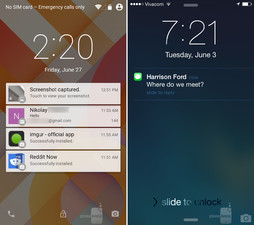
This is the first notable change – for both Android L and iOS 8. It appears that the engineers on both the teams like the idea of copying each other – as is evident here. The Lock screen for Android will now have any new notifications appear in the middle of the screen, aka iOS, rather than having to pull the notification panel down in order to read the same – as in previous versions. iOS too retains this feature in place. The difference between the two OS is visible in the following :
1. Handling of the notifications
While Android L enables tapping the notification twice to launch the respective app and sliding it aside to dismiss it, a swipe enables one to view the notification or ignore it on the iOS 8.
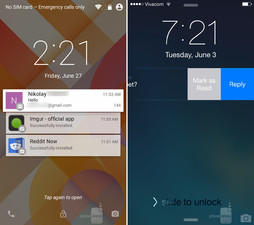
2. Intimation of Notifications
The screen lights up on receipt of a notification in the iOS 8, thereby even allowing the user to view and read the notification. Android L informs its user of an incoming notification by lighting up the LED/RGB notification light on phones/tablets (if present).
3. Unlocking the phone directly to apps
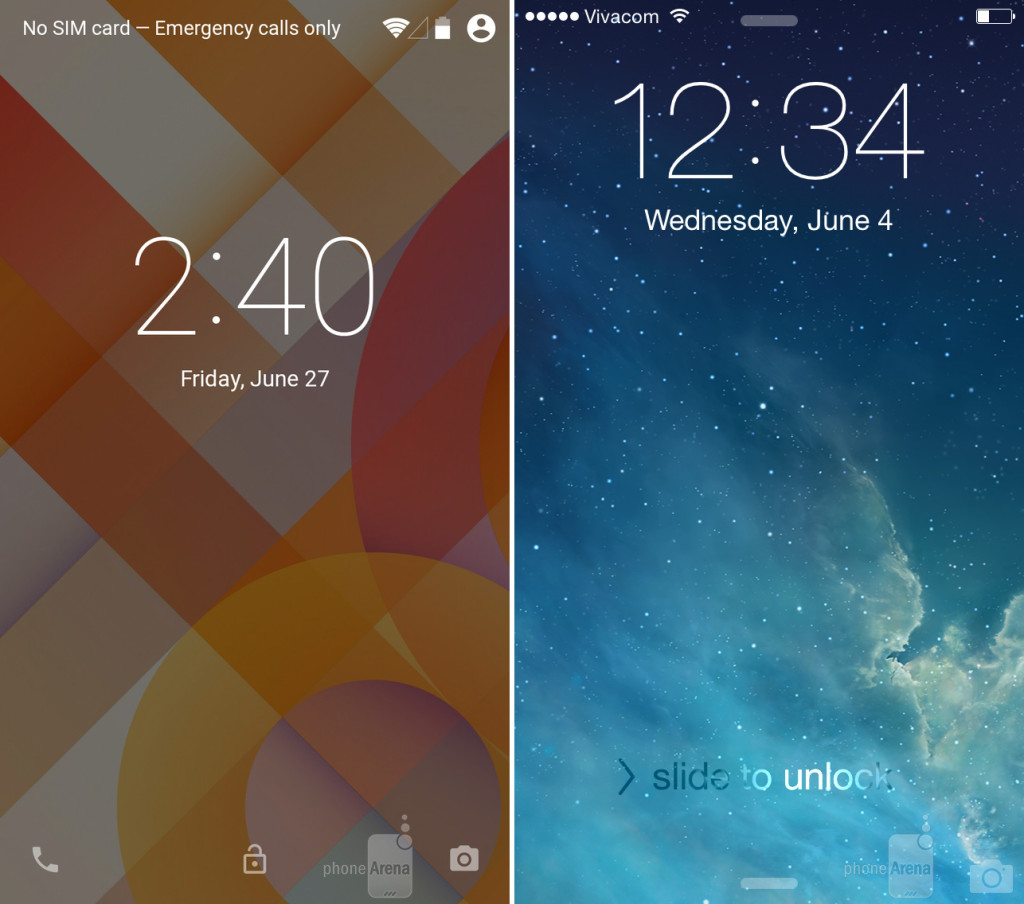
While both OS’ also enable one to unlock the phone directly to the camera app, Android wins in this department by allowing users to unlock directly to the Phone Dialer app – a pretty useful and necessary feature, though small in my opinion.
4. 3rd party widget support
Herein, again it appears that the engineers at opposing camps attempted to copy each other.
The developers’ preview of Android L indicates that this version shall not support 3rd party apps on the lock screen anymore. While this can be viewed as an attempt by Google to help further its theme of generic simplicity I believe that the withdrawal of this feature shall have its fair share of naysayers and supporters alike.
On the other hand, iOS8 has enabled support for 3rd party apps to be added to the device’s notification panel. These widgets can be accessed by pulling the notification panel down – even from the lock screen.
Conclusion
Both OS seem to be gunning for minimalistic simplicity – resulting in retaining almost the entire home screens from their immediately preceding versions.

Having said that, there are some small, yet glaringly visible changes made to Android’s 3 virtual buttons which sits at the bottom of the screen.
So who wins on the Lockscreen design? Android’s simplicity seems to score over iOS, especially given the fact that a user shall find it far easier and possible to personalize as iOS prefers its users having an elegantly simple theme and look.
II. The Contacts and Phone app & Keypads
The PHONE app in Android L seems to have undergone a sea of change and gets a double thumbs up from us!!
Some of the changes are delineated below :
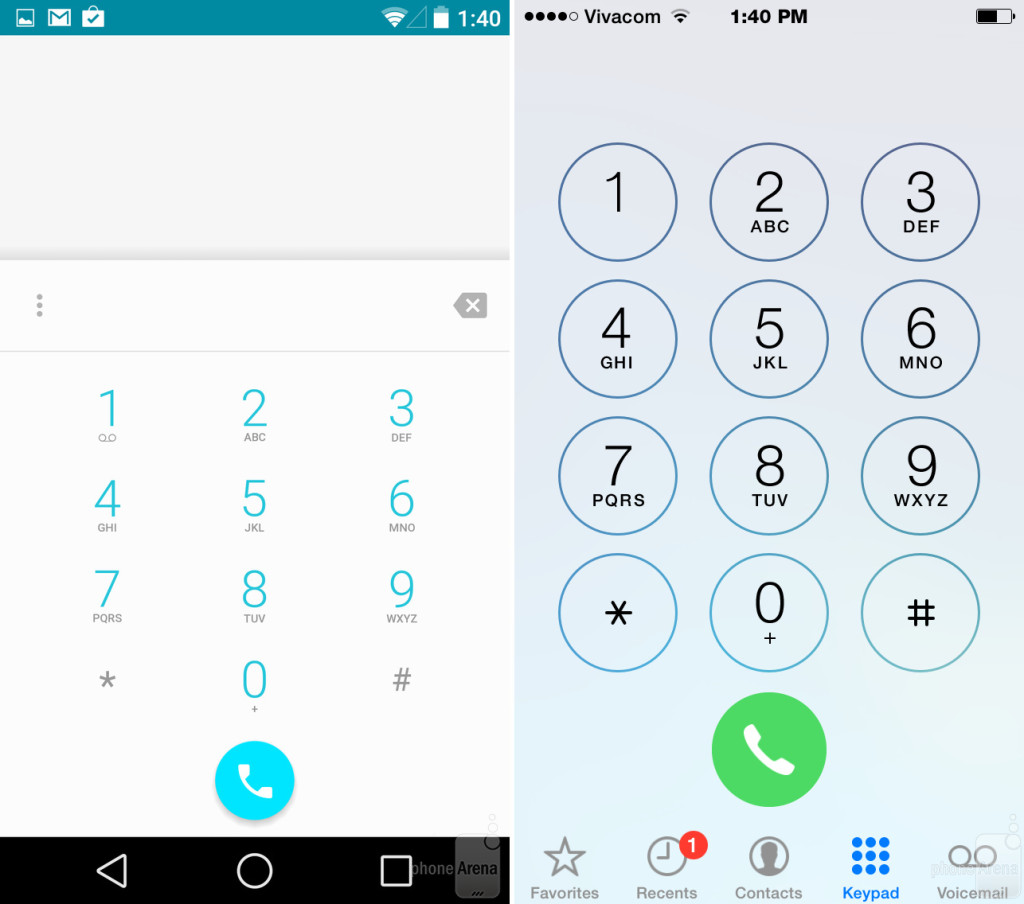
- The Dialing keypad in the Android L Phone app has been changed, as is visible above. It seems quite funky, light and refreshing in my opinion and seems to epitomize the minimalist theme at play.
- Starred contacts are now placed in a more compact fashion, near the bottom of the screen – making it easier to reach even with our thumbs.
- Searching for contacts at the top in the Phone app, yields results not only from our contacts but also from nearby businesses, restaurants and hotels. Moreover, if we receive a call from a business registered in Google’s Directory, their name is displayed on the screen as well!
On the other hand, whilst Apple hasn’t changed much in it’s Phone app, it now allows us to block calls and texts from certain contacts.
CONTACTS app
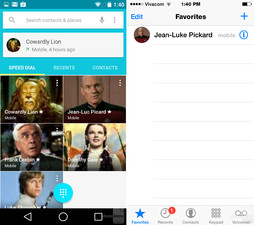
While Android L includes a more compactly packed contact list with less empty space between contacts, it also has smaller thumbnail pictures of contacts : probably resulting in more squinting by the masses – especially, the elderly. On the flip side, contacts are still has photos in the iOS app. Though, profile pictures are displayed for contacts in the Favorites list as can be viewed above.
KEYPAD
This is one aspect where both the OS seemed to have made improvements in leaps and bounds, especially Apple!
From the glimpses of Sundar Pichai and team’s pitch, the new keyboard promises to be fast and more importantly, accurate. Luckily for most of us, this new keyboard is also available for download via Play Store. However, many who’ve been using stock Android 4.4 know that it doesn’t seem to be far from their current keyboard – save the slightly neater appearance due to the disappearing of lines segregating letters. However, this disappearance can just as easily turn out to be a headache, too. This upgrade supports word prediction, auto-correct and gesture typing akin to popular 3rd party keyboard app Swype and SwiftKey. A wide range of Emoticons too shall be inbuilt with this keyboard.
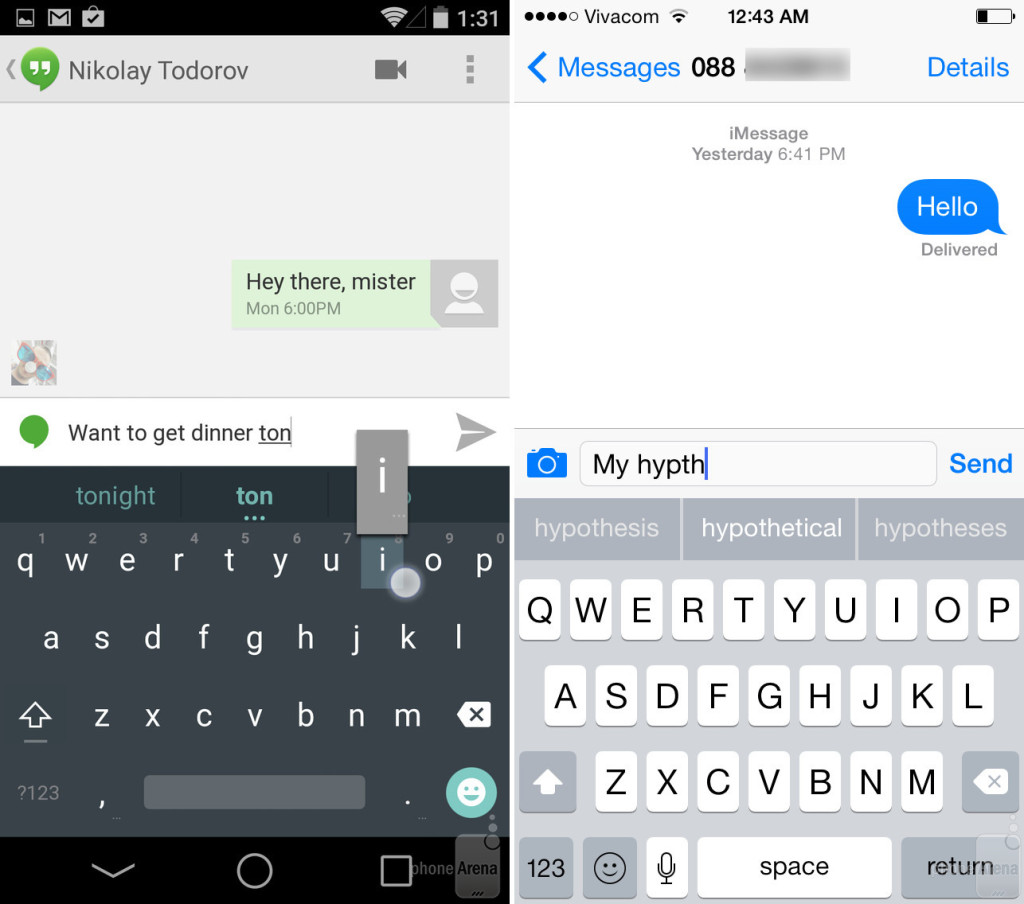
With the advent of iOS 8, Apple has added a host of previously absent features. An example of this is the addition of intelligent word prediction to the stock keyboard, which now employs an algorithm which tends to provide better predictions on the basis of the conversation context and the algorithm’s ability to learn by itself. Moreover, Apple has also thrown this field open to 3rd party developers too – thereby enabling the entry of much-wanted and awaited apps like Swype and its ilk.
III. NOTIFICATION MENU
This is another majorly revamped area in both the OS. Have a look at the new display before you proceed –
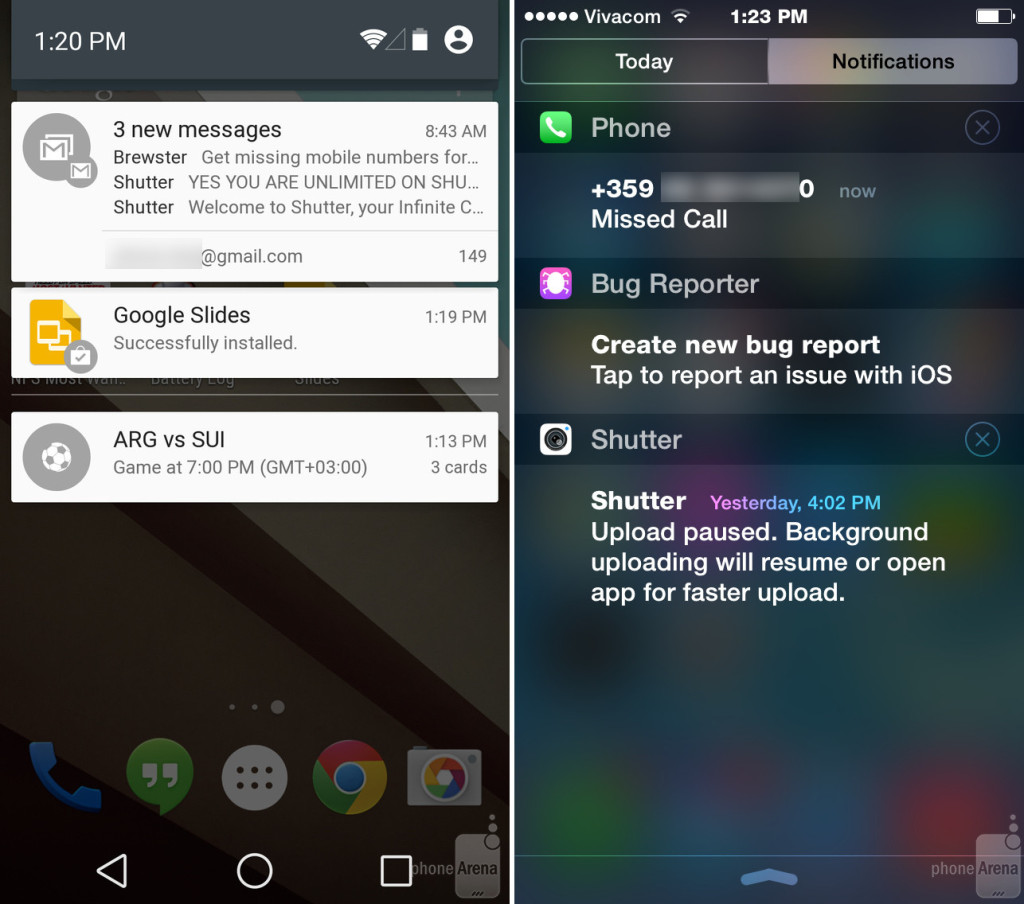
The Android L seems to have numerous small, but neat improvements over its predecessors. The notification panel is no exception. Herein, Google helps you concentrate on the more important notifications by pushing them to the top of the list (a good example here would be E-mails) whilst pushing the relatively unimportant notifications to the bottom of the list (such as app installation notifications and Google Now cards).
iOS 8, on the other hand takes a different approach altogether by creating 2 tabs – ‘Today’ & ‘Notifications’. On dragging the notification panel down, we witness our schedule for the day along with the weather forecast in the ‘Today’ tab. All other widgets and other related bits and pieces of information are also viewed in the ‘Today’ tab. All notifications, grouped according to the applications can be witnessed in the ‘Notifications’ tab. Apple has allowed users to change the order of viewing these from the settings menu.
IV. Under the Hood
While iOS 8 has come out with an astounding 4000 new APIs for developers, Android has managed to beat Apple by making 5000 new APIs available for developers! One cannot overlook the fact that Android has also finally introduced support for 64-bit processors – a feat we saw Apple roll out with iOS 7. Adding more alcohol to this raging inferno is the fact that Google has finally dumped its age-old Dalvik engine in favor of its Android Run Time engine. Check out the below –
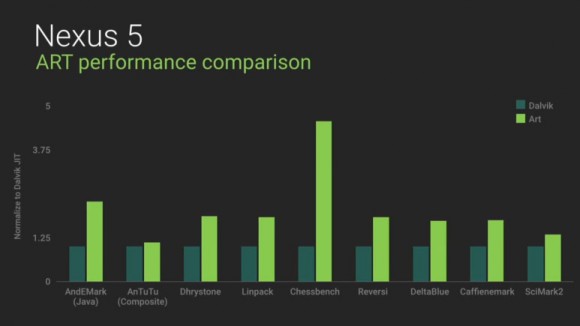
The ART runs on the concept of AOT compiling (Ahead Of Time compiling) against the concept of JIT compiling (Just In Time compiling) being deployed by Dalvik. ART is said to be bringing a burst of speediness and battery efficiency on-board – something which can definitely help in its war against iOS.
On the other side, Apple recently unveiled its new programming language Swift for iOS 8 and OS X development, which is said to aid Apple with more efficient and improved code for iPhones and iPads, while also helping safeguard against certain errors.
Since we’ve not yet got a chance to toy around with either, we shall have to wait and watch before pronouncing our verdict as to which platform has introduced the most optimal changes.
V. WEARABLES
Both Tech behemoths are not content with just making mobile OS and desktop OS anymore. They are trying their level best to infuse their platforms into every second and thought of your life – right from wearable devices like Glasses and Watches to Automating your home and controlling your Automobiles!
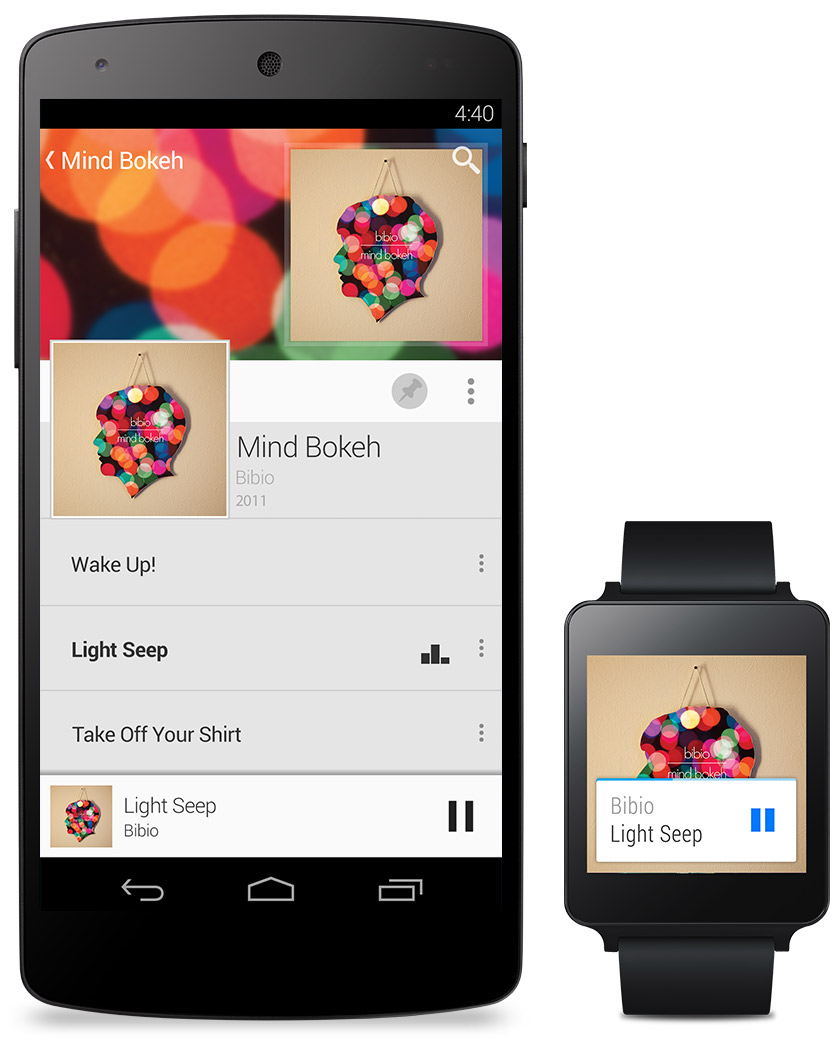
Google seems hell bent on ensuring Android is the singular platform which permeates every section of your life – and its recent attempts show it’ll probably succeed too! Its Android Wear platform now provides the Android OS for watches which shall be made available through 3 OEM partners – LG (with LG G Watch), Motorola (with Moto 360) and Samsung (with Samsung Gear Live). All, save Motorola are good to go and can be currently purchased. They appear set to take Google Glass to the next stage, with its release as a commercial platform set for later this year.
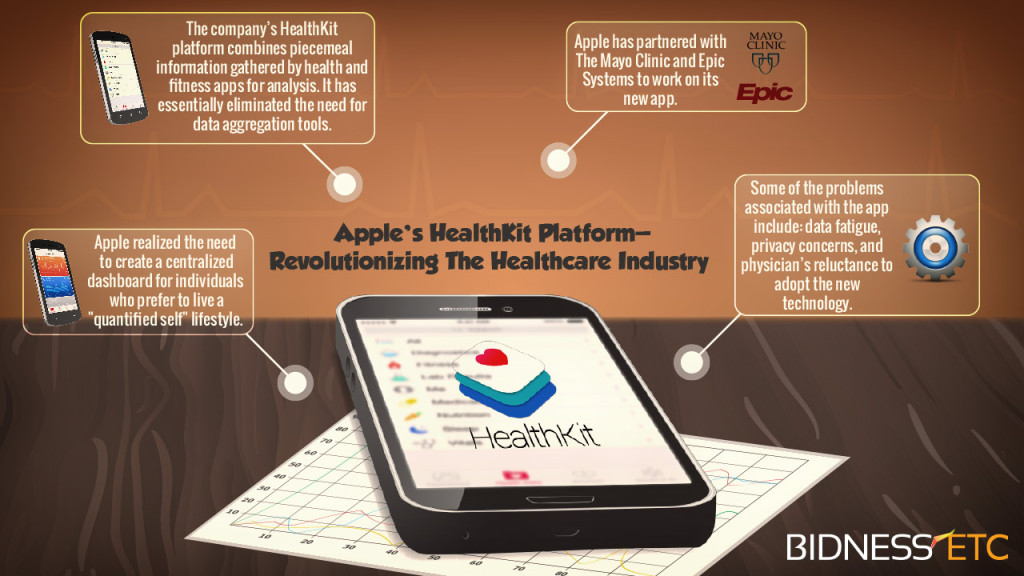
Apple, meanwhile, seems to take it bit slowly as they still have to announce the launch of their eagerly awaited iWatch. To make up for that, they updated the Health app and the HealthKit API for iOS 8. Both of these indicate the company’s continuing focus on fitness and health – thereby, also pointing to the possibility of its upcoming smartwatch being packed with numerous sensors which help extract and maintain your fitness and health levels and data.
So, who is the winner? Android L or iOS 8?
Having analyzed and purviewed a number of features in both the upcoming OS versions, I believe that both are great steps forward with each comprised of numerous relatively small modifications – all of which have been made keeping customers’ feedback and ease of use in mind. Having said that, we also have to acknowledge the fact that Android is desperately trying its level best to catch up with and beat iOS. This is quite obvious in the induction of the Android Runtime (ART) as default over the Dalvik engine (which was based on the JIT – Just In Time – principle). Hopefully, this new engine shall help Google provide Android with some of the finesse and flair with which iOS devices currently function. On the other hand, Apple is doing its best to stay ahead in this race by keeping customers’ requests and considerations in mind while designing newer versions. Moreover, there is no doubting the fact that an Apple device is known as much for its simplistic elegance and designing brilliance as its engineers’ innovative abilities to continuously provide customers with astoundingly brilliant features.
Whilst fans worldwide already beginning the annual slugging fest with each saying their OS and device is better than the other, I highly doubt we shall be able to determine the winner in the immediate future, if these changes are any to go by. However, we may be forced to change our minds when we receive these updates in the coming months. Here’s hoping we get those updates fast!
